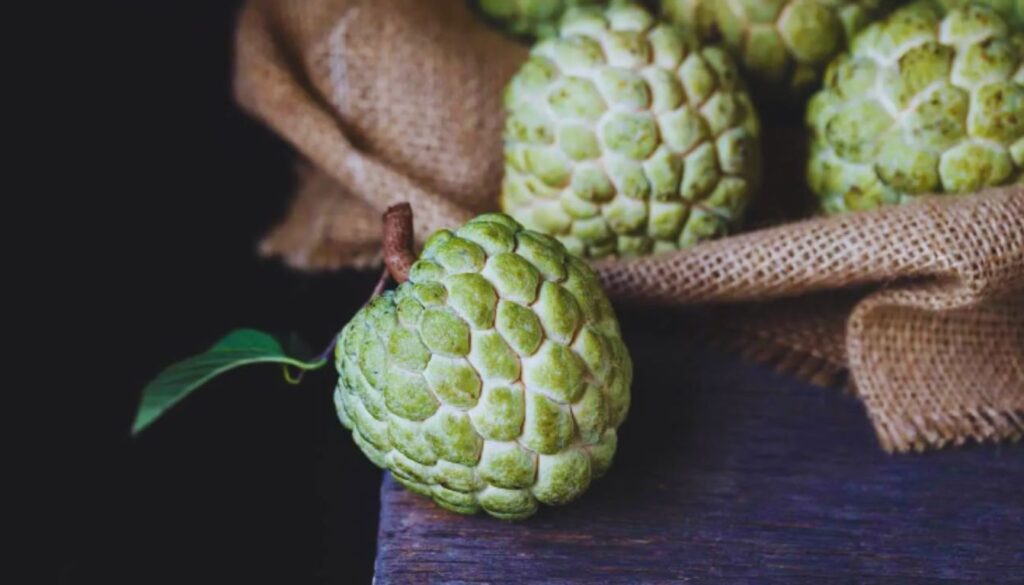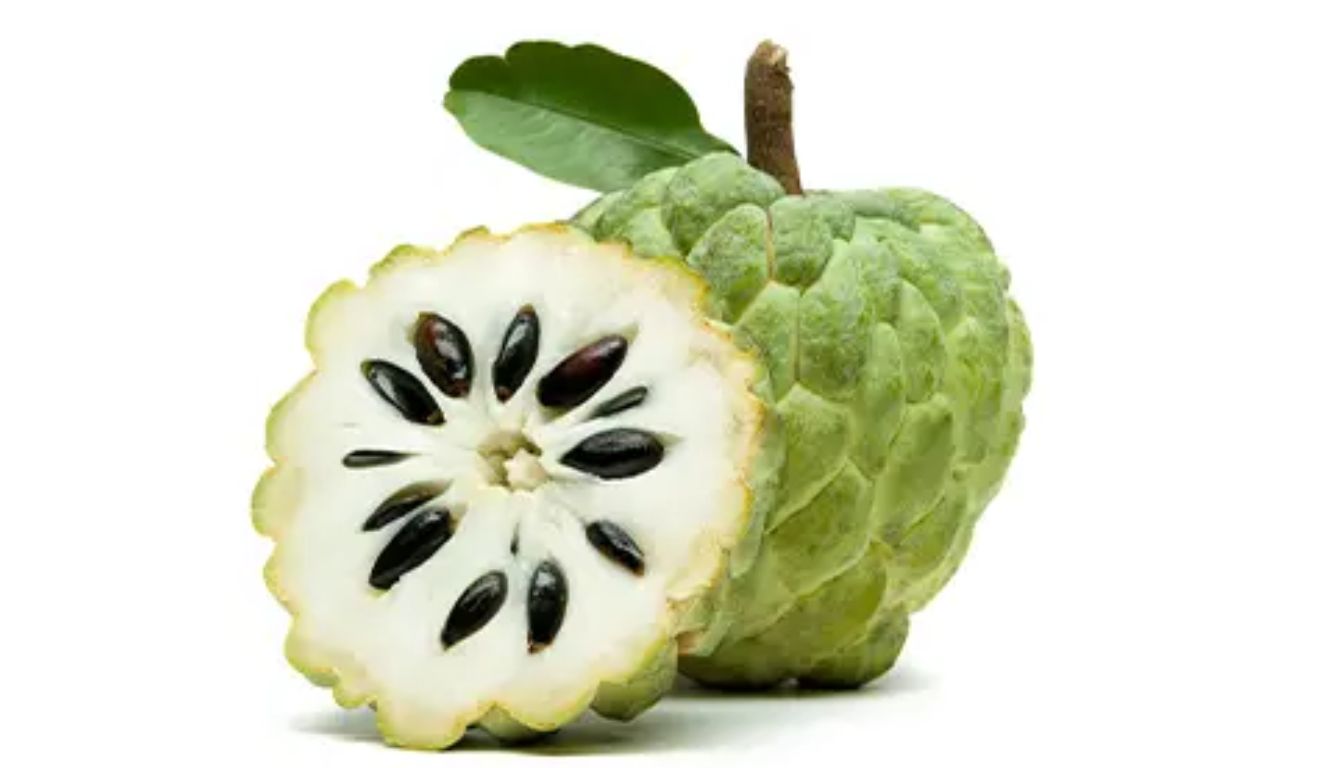Custard apple, often overlooked in the fruit aisle, is a hidden gem bursting with flavor and health benefits. Its creamy texture and sweet taste make it a delightful treat, but it’s the nutritional power packed inside that truly sets it apart. I’ve discovered that indulging in this tropical fruit not only satisfies my sweet tooth but also boosts my well-being.
Packed with vitamins, antioxidants, and fiber, custard apple can enhance digestion, support heart health, and even improve skin vitality. Whether you’re blending it into smoothies or enjoying it fresh, this fruit offers a delicious way to nourish your body. Join me as I dive into the incredible benefits of custard apple and why it deserves a spot in your diet.
Nutritional Profile of Custard Apple
Custard apple’s nutritional profile showcases a wealth of benefits packed in a delicious fruit. This tropical delight truly stands out in the health department.
Vitamins and Minerals
Custard apple contains significant amounts of vitamin C, which supports the immune system. You’ll also find vitamin A, promoting healthy vision and skin. Potassium appears abundantly in this fruit, aiding in regulating blood pressure. A serving typically includes about 247 mg of potassium. Magnesium contributes to overall muscle and nerve function, making this fruit a powerhouse. Custard apple’s unique mix of vitamins and minerals ensures it contributes positively to a balanced diet.
Health Benefits of Custard Apple
Custard apple offers several health benefits that enhance overall well-being. This fruit packs a nutritional punch, making it a delightful addition to my diet.
Boosting Immune System
Custard apple helps strengthen my immune system. It’s rich in vitamin C, which fights off infections. When I include this fruit in my meals, I feel more resilient against common colds and other illnesses. Additionally, its antioxidants combat free radicals, providing extra protection for my health.
Promoting Digestive Health
Digestive health improves with custard apple. The fruit contains dietary fiber, which aids digestion and promotes regular bowel movements. Whenever I snack on custard apple, I notice less bloating and discomfort. This fiber also supports the growth of good gut bacteria, contributing to a healthier digestive system.
Supporting Heart Health
Heart health receives a boost from custard apple’s potassium content. Potassium helps regulate blood pressure, reducing the risk of hypertension. A happy heart makes for a happier life. Plus, the fruit’s fiber helps lower cholesterol levels. Incorporating custard apple into my meals is a simple way to support my heart’s well-being.
Culinary Uses of Custard Apple

Custard apple is delicious and versatile in the kitchen. This fruity gem integrates seamlessly into various dishes, elevating flavor and nutrition.
Popular Recipes
I enjoy making custard apple smoothies. Blending the fruit with yogurt and a splash of honey creates a creamy delight. Another favorite is custard apple ice cream. With just a few simple ingredients, I whip it up and freeze it for a refreshing treat. Custard apple salads also shine, pairing beautifully with greens, nuts, and a tangy dressing. Lastly, consider baking custard apple into muffins for a sweet morning surprise.
Pairing with Other Ingredients
Custard apple pairs wonderfully with spices. Adding a sprinkle of cinnamon enhances its sweetness. Coconut also complements the fruit nicely, bringing a tropical flair. Citrus fruits like lime or lemon brighten the flavor, balancing its creaminess. Pairing custard apple with nuts, such as almonds or walnuts, adds crunch and nutrition. These creative combinations make every bite exciting.
Cultivation and Harvesting
Growing custard apple offers a rewarding experience. This tropical fruit thrives in warm climates. I enjoy starting this journey by selecting a sunny spot with well-drained soil. Custard apple trees prefer slightly acidic to neutral soil, so I ensure it fits that criterion. Planting seeds directly into the soil works well, or I may opt for seedlings for quicker results.
Growing Custard Apple
I plant custard apple seeds about an inch deep. If I choose seedlings, I space them around 8 to 10 feet apart to allow room for growth. Watering regularly helps keep the soil moist but not soggy. Fertilizing with organic compost boosts its growth, ensuring it gets plenty of nutrients. As the tree grows, I keep an eye out for pests like aphids and caterpillars. I find that organic treatments work effectively without harming the fruit.
Pollination usually occurs naturally, thanks to bees and other insects. However, I sometimes assist by gently shaking the branches to help distribute pollen more evenly. Patience is key; custard apple trees typically yield fruit within three to four years.
Harvesting Tips
When harvesting custard apples, timing is everything. I wait until the fruit turns slightly yellow and yields to gentle pressure. If the fruit clings stubbornly, it’s not quite ready. I use a sharp knife to cut the fruit from the branch, avoiding any damage. Placing harvested apples in a single layer prevents bruising.
After harvest, I store the fruit in a cool place for a few days. Once ripe, custard apples can be enjoyed fresh or in recipes. I love the sweet flavor combined with a smooth texture. Whether in smoothies or desserts, this fruit brings joy to any dish.
Before You Go – Benefits of Custard Apple
Embracing custard apple in my diet has truly transformed my approach to healthy eating. This fruit isn’t just delicious; it’s packed with essential nutrients that support overall wellness. From boosting my immune system to enhancing my skin’s vitality custard apple offers a variety of benefits that are hard to ignore.
Incorporating it into my meals has been a delightful experience. Whether I enjoy it fresh or blended into smoothies the creamy texture and sweet flavor always elevate my dishes. I encourage you to explore the culinary possibilities of custard apple and reap its health rewards. It’s a simple yet powerful way to enhance your well-being. Don’t forget to add The Herb Prof home page to your favorites so you don’t miss out on any future articles.
References – Benefits of Custard Apple
Little Herb Encyclopedia, by Jack Ritchason; N.D., Woodland Publishing Incorporated, 1995
The Ultimate Healing System, Course Manual, Copyright 1985, Don Lepore
Planetary Herbology, Michael Tierra, C.A., N.D., Lotus Press, 1988
Handbook of Medicinal Herbs, by James A. Duke, Pub. CRP Second Edition 2007
The Complete Medicinal Herbal, by Penelope Ody, Published by Dorling Kindersley
Check the Following Articles
Unlocking the Benefits of Apple Seeds
Macadamia Nuts Benefits: Everything You Need To Know!
How to Grow Hens and Chicks: A Simple Guide
How to Grow Statice Flowers: Tips for Vibrant Blooms
Frequently Asked Questions – Benefits of Custard Apple
What is a custard apple and what does it taste like?
Custard apple, also known as cherimoya, is a tropical fruit with a creamy, soft texture and sweet flavor. It often has notes of banana, pineapple, and vanilla, making it a unique and delightful treat.
What are the health benefits of custard apple?
Custard apple is rich in vitamins, particularly vitamin C and A, which boost immunity and promote healthy skin and vision. It’s also high in dietary fiber, which aids digestion, and potassium, which helps regulate blood pressure.
How can I include custard apple in my diet?
You can enjoy custard apple fresh or blend it into smoothies. It can also be added to salads, ice creams, or used in baking recipes like muffins. Pairing with spices or other fruits enhances its flavor.
How do I grow custard apple?
Custard apple thrives in warm climates with well-drained, slightly acidic to neutral soil. Space seedlings properly, water regularly, and use organic fertilizers. Natural pollination usually suffices, but you might gently shake branches to assist.
When is the best time to harvest custard apple?
Custard apples should be harvested when they are slightly soft to the touch and have a sweet aroma. To prevent bruising, handle them gently and store them in a cool place until ready to eat.

